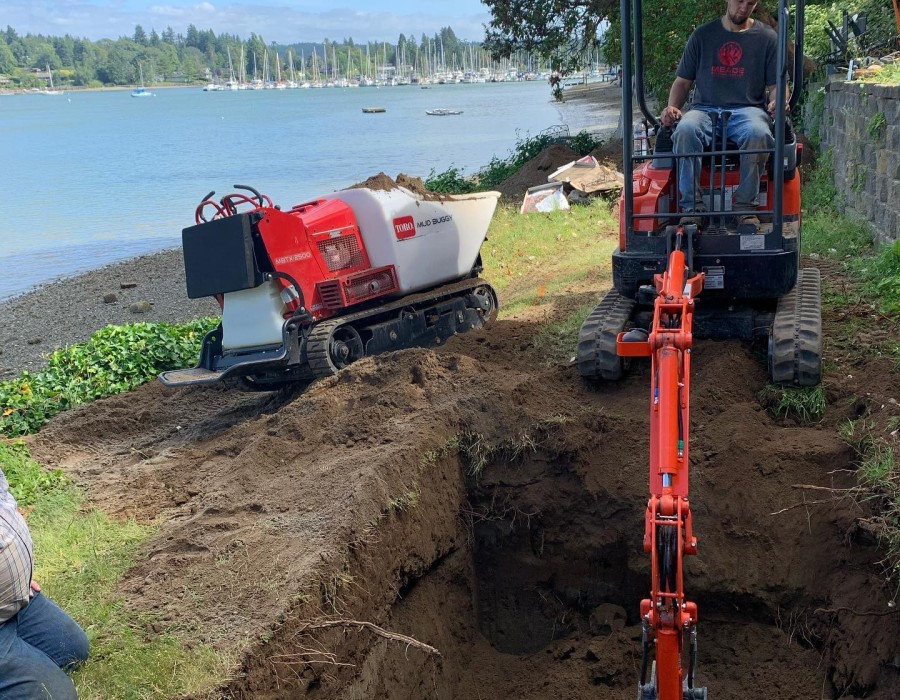A residential septic tank is a crucial component of homes not connected to municipal sewage systems. Proper design ensures efficient waste management, protects environmental health, and maintains property value. This article explores essential considerations in residential septic tank design, including sizing, materials, placement, maintenance, and regulatory requirements.
Understanding Septic Systems
Septic systems are decentralized wastewater treatment systems commonly used in rural and suburban areas. They consist of two main parts: the septic tank and the drainfield (or leachfield). The septic tank receives wastewater from household plumbing fixtures, separates solids from liquids, and allows anaerobic digestion of organic matter. The effluent flows into the drainfield where it undergoes further treatment as it percolates through soil layers.
Key Factors in Residential Septic Tank Design
1. Sizing Requirements:
- Household Size and Usage: The size of the septic tank depends on the number of bedrooms in the house and daily water usage. Typically, a larger household or one with heavy water usage (e.g., laundry, dishwashing) requires a larger tank.
- Regulatory Standards: Local health departments or environmental agencies have guidelines for septic tank sizing based on property size, soil type, and water table depth.
2. Tank Materials:
- Concrete: Durable and commonly used, concrete tanks withstand ground pressure and provide long-term stability.
- Fiberglass: Lightweight and resistant to corrosion, fiberglass tanks are suitable for areas with high groundwater levels.
- Plastic: Cost-effective and easy to install, plastic tanks are ideal for smaller households with limited space.
3. Design Considerations:
- Inlet and Outlet Structure: Positioned to promote settling of solids and prevent effluent turbulence.
- Baffles and Dividers: Ensure proper flow patterns within the tank, preventing solids from exiting and reducing scum accumulation.
4. Placement and Installation:
- Distance from Property: Septic tanks should be located away from wells, property boundaries, and water bodies to avoid contamination.
- Depth: Tanks are typically buried underground at a depth that prevents freezing and facilitates maintenance access.
- Ventilation: Adequate ventilation prevents buildup of gases like methane and hydrogen sulfide, ensuring safety and odor control.
5. Maintenance and Inspection:
- Pumping Schedule: Regular pumping removes accumulated solids, preventing tank overflow and drainfield clogging.
- Inspection Ports: Accessible ports allow inspection of tank conditions and facilitate maintenance tasks.
- Annual Inspections: Check for leaks, structural integrity, and proper function of inlet and outlet components.
6. Drainfield Design:
- Size and Configuration: Calculated based on soil percolation rates, ensuring proper absorption of effluent.
- Distance from Tank: Adequate distance prevents hydraulic overload and ensures effluent treatment through soil filtration.
- Soil Composition: Soil permeability affects drainage efficiency; soil tests determine suitability for drainfield installation.
Regulatory Compliance and Permits
Local health departments or environmental agencies regulate residential septic systems to protect groundwater and public health. Permits are required for new installations or modifications to ensure compliance with design standards, setback distances, and environmental impact assessments. Homeowners should obtain permits and adhere to regulatory guidelines to avoid fines and environmental harm.
Common Design Challenges and Solutions
1. High Water Table:
- Solution: Use elevated drainfields or alternative treatment technologies (e.g., mound systems) to prevent groundwater contamination.
2. Small Property Size:
- Solution: Install compact, high-capacity tanks or consider alternative systems like aerobic treatment units (ATUs) or recirculating sand filters.
3. Poor Soil Permeability:
- Solution: Treat effluent with advanced technologies (e.g., drip irrigation systems) or enhance soil drainage through additives or mounding.
Environmental and Economic Benefits
Properly designed and maintained septic systems provide several benefits:
- Groundwater Protection: Efficient treatment prevents contamination of groundwater sources, preserving water quality.
- Cost-Effective: Initial installation costs and ongoing maintenance are generally lower than connecting to municipal sewage systems.
- Property Value: Well-maintained septic systems enhance property value and appeal to prospective buyers.
Conclusion
Residential septic tank design plays a critical role in ensuring effective wastewater treatment, protecting environmental health, and complying with regulatory standards. By considering factors such as sizing, materials, placement, and maintenance, homeowners can install reliable septic systems that function efficiently for years. Consulting with septic system professionals and local authorities ensures compliance with regulations and promotes sustainable wastewater management practices. Investing in a well-designed septic system not only benefits individual households but also contributes to community and environmental well-being.





Comments